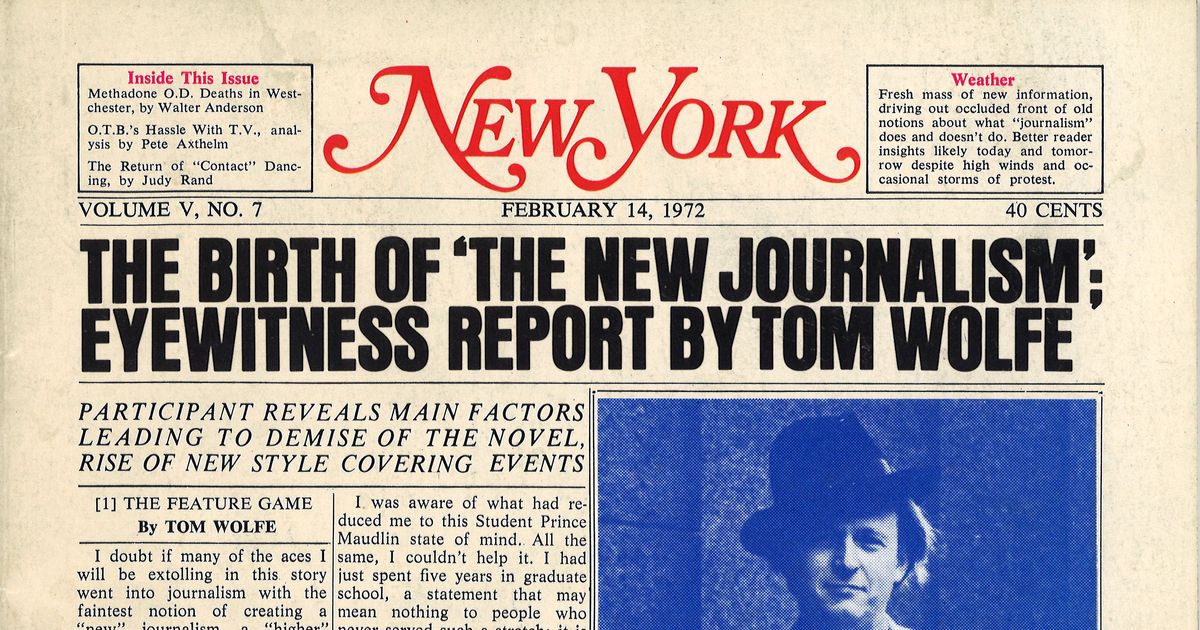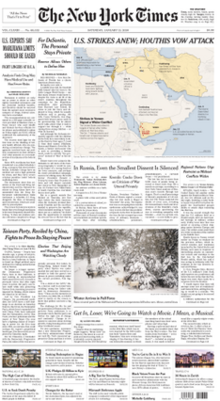Some Known Facts About News Articles.
Some Known Facts About News Articles.
Blog Article
Fascination About News Articles
Table of ContentsThe Facts About News Articles RevealedThe 8-Second Trick For News Articles9 Easy Facts About News Articles Shown5 Easy Facts About News Articles ShownWhat Does News Articles Mean?
Excellent expertise of different topics provides pupils a competitive edge over their peers. Although electronic and social media are conveniently accessible, we must not fail to remember exactly how crucial it is to check out the newspapers. Parents need to attempt and inculcate the behavior of checking out a paper as a day-to-day regimen to proceed the heritage of the adored print medium.Information stories additionally contain at least one of the following vital attributes relative to the desired audience: closeness, prominence, timeliness, human passion, quirk, or consequence.
Within these restrictions, information stories additionally intend to be extensive. Other factors are involved, some stylistic and some derived from the media type. Amongst the larger and much more reputable papers, justness and balance is a major element in presenting information. Commentary is typically restricted to a separate area, though each paper might have a various overall angle.
Papers with a worldwide audience, for instance, tend to make use of a much more official style of writing. News Articles.; common design overviews consist of the and the US News Design Book.
Our News Articles Statements
As a rule, journalists will not use a long word when a brief one will do. Information authors attempt to prevent utilizing the exact same word extra than once in a paragraph (sometimes called an "resemble" or "word mirror").
Headlines often omit the subject (e.g., "Leaps From Watercraft, Catches in Wheel") or verb (e.g., "Feline female lucky"). A subhead (additionally subhed, sub-headline, subheading, caption, deck or dek) can be either a subservient title under the main headline, or the heading of a subsection of the post. It is a heading that comes before the main text, or a team of paragraphs of the major message.

of a post subject, informant, or interviewee), it is described as a drawn quote or pull quote. Additional billboards of any of these kinds may appear later in the short article (particularly on succeeding pages) to entice further reading. Journalistic internet sites occasionally make use of computer animation methods to switch one billboard for one more (e.g.
News Articles - Truths
Such signboards are likewise used as tips to the short article in other areas of the magazine or site, or as promotions for the item in various other magazine or websites. Press launch of the Swiss government. Typical structure with title, lead paragraph (recap in vibrant), various other paragraphs (details) and call info.

Example of a hard-lead paragraph NASA is suggesting an additional area project. The firm's budget plan demand, introduced today, consisted of a strategy to send an additional objective to the Moon. This time around the firm wishes to establish a lasting facility as a jumping-off factor for other area journeys. The budget plan demands about $10 billion for the project.
An "off-lead" is the 2nd most essential front web page information of the day. To "hide the lead" is to begin the article with history information or information of additional significance to the readers, requiring them to review more deeply into an article than they should have to in order to find the vital factors.
The Buzz on News Articles
Common usage is that a person or two sentences each her response develop their own paragraph. Journalists usually explain the organization or structure of a news story as an inverted pyramid. The crucial and most interesting elements of a tale are put at the beginning, with sustaining information adhering to in order of lessening relevance.
It enables individuals to discover a subject to only the deepness that their interest takes them, and without the charge of information or subtleties that they might think about irrelevant, but still making that details offered to more interested visitors. The inverted pyramid framework also makes it possible for write-ups to be cut to any kind of approximate length during layout, to suit the space offered.
Some authors begin their stories with the "1-2-3 lead", yet there are several kinds of lead readily available. A kicker can refer to several points: The last tale in the information broadcast; a "happy" tale to end the program.
Longer articles, such as publication cover write-ups and the items that lead the inside areas of a paper, are referred to as. Attribute tales vary from straight information in a number of means. Foremost is the lack of a straight-news lead, the majority of official statement the time. Rather than offering the essence of a story in advance, attribute writers may try to lure viewers in.
The 9-Minute Rule for News Articles
The reporter often details communications with interview subjects, making the piece much more individual. A feature's very first paragraphs commonly connect an appealing minute or event, as in an "unscientific lead". From the details of an individual or episode, its view rapidly expands to generalities regarding the story's topic. The section that indicates what a function has to do with is called the or billboard.

The Editor's Tool you could look here kit: A Recommendation Overview for Beginners and Professionals (2001) Allan M. Siegal and William G. Connolly. The New York Times Guidebook of Style and Use: The Authorities Style Guide Made Use Of by the Writers and Editors of the Globe's A lot of Authoritative Newspaper (2002) M. L. Stein, Susan Paterno, and R.
Report this page